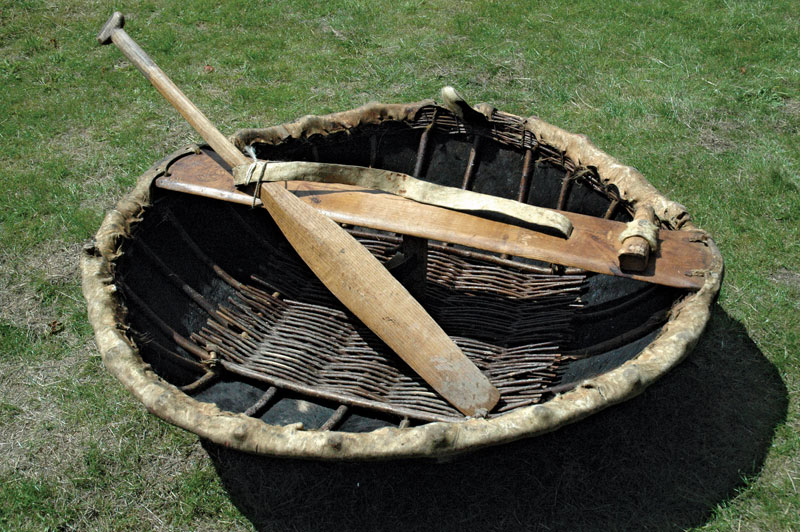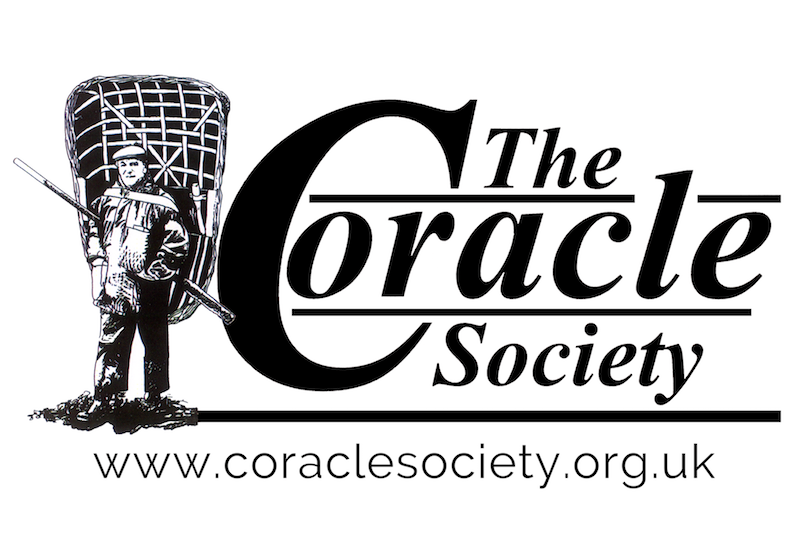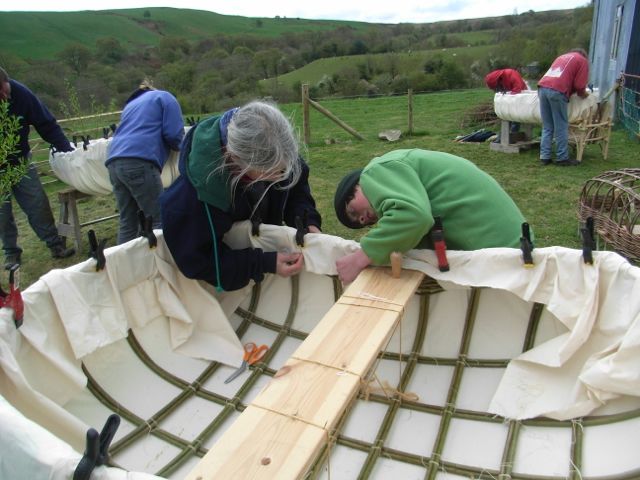
About the Coracle
The coracle - also known as the currach, bull boat, quffa, parasil - is a small, keel-less boat, with a long history spanning thousands of years. It is likely the first form of water transportation. Their main uses have always been as a means for fishing or transportation, although today, at least within Europe, their main use tends to be recreational. The traditional construction of the coracle - still largely unchanged - is a basketwork frame made using locally foraged wood. Ropework made from animal hair may have been used to secure parts of the framework together, and the waterproof covering was made from animal hide.
Modern materials and technologies have changed the way the coracle can be constructed. The wooden basket frame tends to be formed using sawn or hand-cleft laths. Many coracles are still built with willow or hazel, though other woods such as ash are also used. Modern waterproof coverings tend to be a natural cotton canvas (calico) or a synthetic fabric such as nylon, with pitch or bitumen paint used as the waterproofing agent. Some coracles are made from fibreglass with a mould being used to define the shape, producing a very light vessel with a strong skin.
Coracle design differs around the world and even within the UK. This is down to several factors; the materials available locally, the intended use for the vessel, the conditions of the water they are to be used on and even personal preferences. Because of this, coracles can be defined into a number of 'types' - within the UK alone, there are more than 20 different coracle types.
About The Coracle Society

The Coracle Society was founded in 1990 with the aim of promoting the use and history of these and their allied craft. They do this with the support of their members, some of whom are coracle builders dispersed throughout the UK. They demonstrate the traditions of coracle building and 'coracling' (paddling a coracle) to people of all backgrounds - from primary school pupils to youth groups, families, local organisations, and the general public.
The Society's aims are:
— Promoting the knowledge of coracles, curraghs and allied craft, their making and use, and their study and collection;
— Taking all reasonable steps to support the continuance of fishing involving the use of coracles and to encourage the holding of coracle regattas, races, and the like;
— Publishing a newsletter as a means of communication between all those interested in coracles;
— Using its best endeavours to obtain supplies of materials for the construction of coracles;
— Promoting demonstrations, courses, exhibitions, discussions, and lectures relating to coracles.
The Society aims to be community open to all, whether they wish to research the fascinating history of the craft, or simply get out on the water and have a good time.

Since the formation of The Coracle Society in 1990, interest in coracles and coracle building has undergone something of a revival, with enthusiasts around the world enjoying the delights of these simple, little craft. In recent times coracles and their allied craft have enjoyed copious media attention, appearing in blockbuster films, factual programmes such as James May's Man Lab, Richard Hammond's Engineering Connections, Escape to the Country, an episode of Britain Afloat in 2022, and many more. In 2014, a one hour documentary aired on Channel 4 detailing the findings of member Dr Irving Finkel in uncovering and deciphering a Babylonian Clay tablet in which it was discovered that Noah's Ark was in fact a coracle - similar in nature to an Iraqi quffa.
Find out more:
Follow them on social media:

